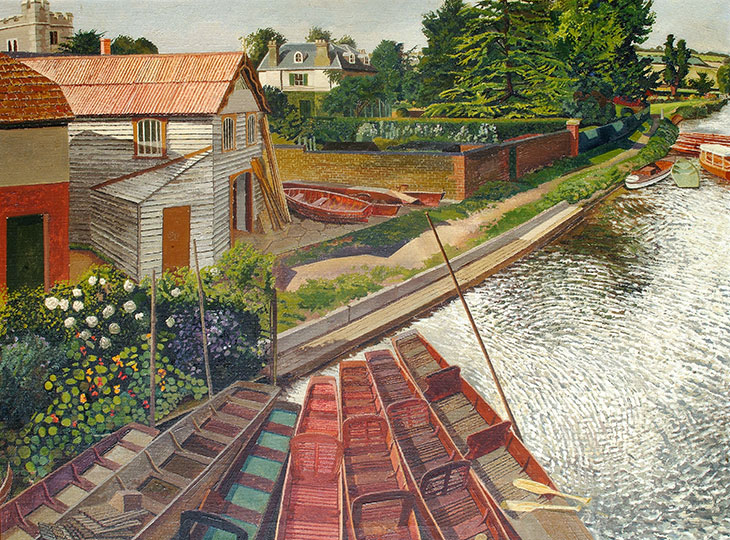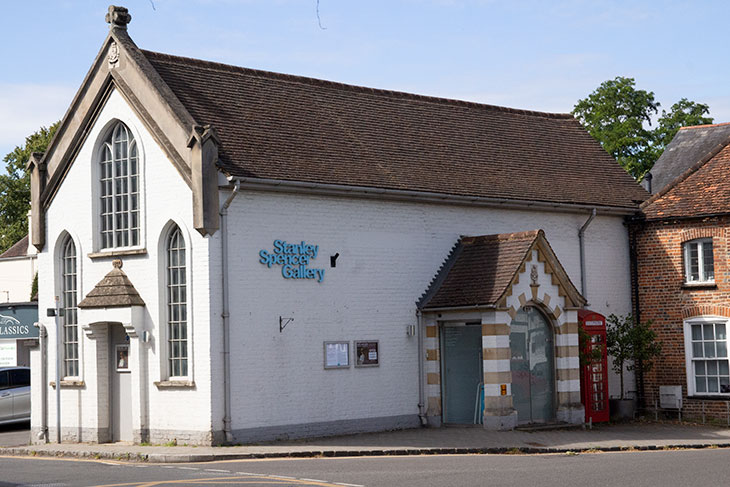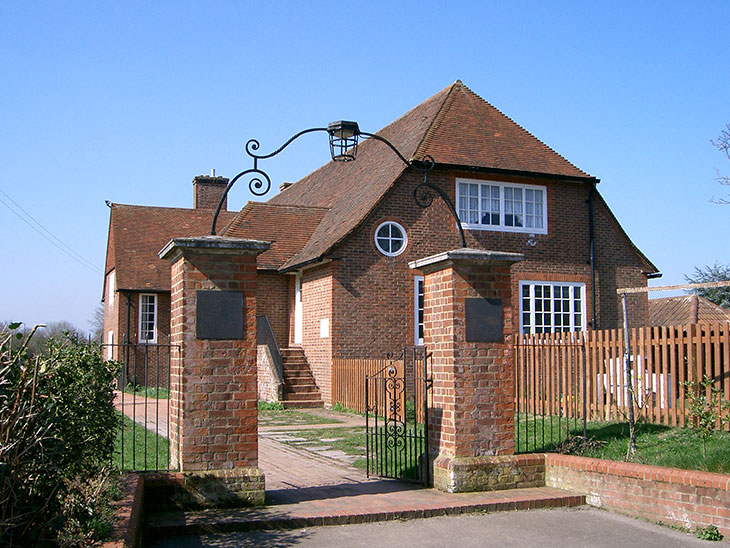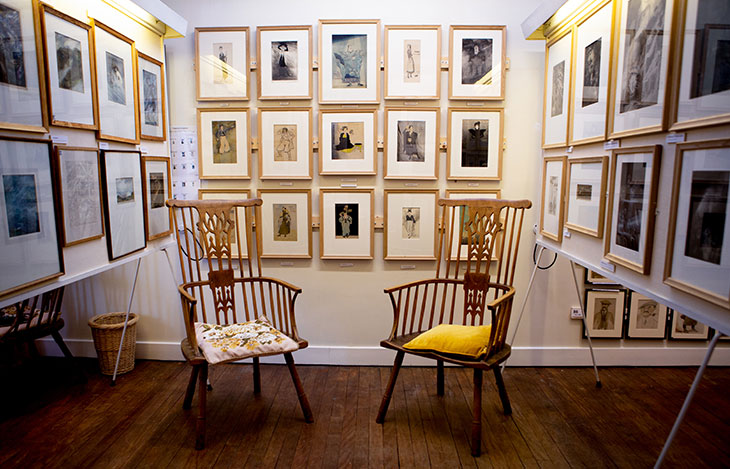Nearly two months have passed since the first UK museums and art galleries tentatively reopened their doors to the public. Inside, the art is reassuringly familiar – the experience, not so much. Masks, one-way systems and timed tickets now frame our gallery encounters. To the relief of museum staff and cultural leaders, however, public take-up has been strong: in London, larger venues such as the National Gallery and Royal Academy have extended hours to satisfy demand.
Amid all the talk of reopening, one group of galleries has fallen under the radar, their quiet presence in the country’s cultural life having been almost silenced by the lockdown. These are the volunteer-run galleries, often in small towns or communities, that have no paid staff and are managed and maintained exclusively by local enthusiasts. Such galleries and their collections tend to be closely related to their surroundings, in many cases celebrating a local artist or group of artists; they may draw day-trippers to a town or village, but they also rely on loyal audiences in their immediate area.
Among the volunteer-run galleries opening their doors again this month are the Fry Art Gallery, Saffron Walden, the Sidney Sime Gallery, Worplesdon, and the Stanley Spencer Gallery, Cookham. During lockdown, it was never going to be easy for these small museums to maintain a public presence. Whereas larger organisations were able to ramp up their activities online, without dedicated digital teams and budgets volunteer-run galleries have had to take a more pragmatic approach. Both the Fry Art Gallery and the Stanley Spencer Gallery were able release videos about postponed exhibitions during lockdown; even the tiny Sime Gallery has posted two short videos on Facebook announcing its reopening. As Mary Broughton, chair of the Sime Gallery, tells me, its volunteer team has had little experience with social media and website management; but even small innovations promise to open up new avenues of engagement and tempt visitors from further afield.
View from Cookham Bridge (1936), Stanley Spencer. Stanley Spencer Gallery, Cookham. © Estate of Stanley Spencer and Bridgeman Images 2019

Like larger institutions, volunteer-run galleries face significant challenges in reopening – some of which are by now familiar, but others that are specific to these museums’ size and audience. Ordinarily, their visitors are decidedly local, with many repeat attenders, so unlike larger city galleries that rely on considerable numbers of tourists, galleries such as the Stanley Spencer, the Sime and the Fry will not suffer seriously from the post-pandemic drop in overseas visitors. And with many people still wary of public transport – which is likely to hinder institutions in cities – many prospective visitors will be able easily walk or cycle to these galleries. However, they will likely suffer from a lack of school visits and due to the caution of people over 70, both of which made up a significant proportion of their footfall before the pandemic. While health concerns might forestall some of these older visitors, the new emphasis on booking tickets online may also prove a hurdle for a demographic perhaps not as digitally literate as younger generations.
The Stanley Spencer Gallery, formerly a Methodist chapel, in Cookham. Photo: Courtesy Stanley Spencer Gallery

Once the visitors are tempted in, the challenges increase. These galleries, often in converted spaces such as an artist’s home or community building, have particular spatial limitations. The Stanley Spencer Gallery, housing a remarkable collection of works by Spencer (1891–1959), is set in the atmospheric – albeit diminutive – repurposed Wesleyan chapel that Spencer frequented as a boy. Under social distancing guidelines, only 10 visitors are currently allowed in the gallery at any one time. For an organisation that relies heavily on admissions sales to generate revenue, this restriction will have financial consequences at what is already a difficult time.
The Fry Art Gallery, home to a collection of artworks by prominent artists who lived in north-west Essex (among them Eric Ravilious and Edward Bawden), will also only be able to admit 10 visitors an hour, with tickets booked in advance via the Art Fund’s free Art Tickets system. For galleries without their own online ticket-booking system, Art Tickets has made managing visitors in the post-lockdown period a possibility. ‘We doubt that we could open without this amazing free resource,’ honorary secretary Gordon Cummings explains.
Worplesdon Memorial Hall, which houses the Sidney Sime Gallery. Photo: courtesy the Sidney Sime Gallery

One step down in size is the Sidney Sime Gallery, which occupies the upstairs of Worplesdon Memorial Hall – essentially a single room in a charming village hall. The gallery has been open on Wednesday and Sunday afternoons throughout August, by appointment and for a maximum of 6 people. Boasting a surprising collection of more than 500 paintings and drawings by the charismatic (if little-known) local artist Sidney Sime (1865–1941), this gallery is emblematic of distinctive, enriching role that volunteer-run galleries play in our cultural landscape. There is usually no admission charge at the Sime Gallery so it won’t lose direct income from decreased footfall – but the slow flow of gallery-goers is far from ideal. Having gained charitable status at the start of 2020, this summer should have been a chance to raise the profile of the gallery and its collection with a season of events and festivities.
Inside the Sidney Sime Gallery in Worplesdon. Photo: courtesy the Sidney Sime Gallery

It is to be hoped that the small, personal nature of these galleries will in fact prove advantageous, allowing for a contemplative experience of their collections in way that may not be possible at larger venues. Of course, like all communal spaces in the post-lockdown era, they have had to implement new protective measures. All three galleries have made adjustments to ensure the safety of their staff and visitors – including installing protective screens, one-way systems and hand-sanitiser stations. The Fry has even issued a step-by-step handbook to gallery invigilators covering the new procedures, including detailed instructions for the hourly cleaning regime to maintain hygiene standards.
Clearly these galleries are doing everything to ensure a safe experience for their visitors. But what of the volunteers themselves? The defining feature of these places – that they operate with no paid staff – might be expected to be their defining weakness. They rely on the energy and commitment of a cohort of volunteers, many of whom are over 70 and adjusting to a new world of shielding and social distancing. In fact, most volunteers are eager to return to their roles as invigilators, custodians, shop attendants and guides; across the three galleries, only 23 of more than 120 volunteers are uncertain if they will be able to continue with their work. A sign, perhaps, of just how reluctant many older members of the population are to have their lives and contributions to society indefinitely put on hold.
Elsewhere are volunteer-run museums and galleries that cannot currently reopen – and which, with no salaries to pay, may be mothballed for many months to come. But the Fry Art Gallery, the Stanley Spencer Gallery and the Sidney Sime Gallery encapsulate a determination and commitment to their collections and local communities that may prove an inspiration to others. ‘The future is of course uncertain for us all,’ Mary Broughton says, ‘but I believe the arts are vital for humanity.’
The Sidney Sime Gallery, Worplesdon, is open Wednesdays and Sundays throughout August.
The Stanley Spencer Galley, Cookham, reopened on 15 August.
The Fry Art Gallery, Saffron Walden, reopens 31 August.



